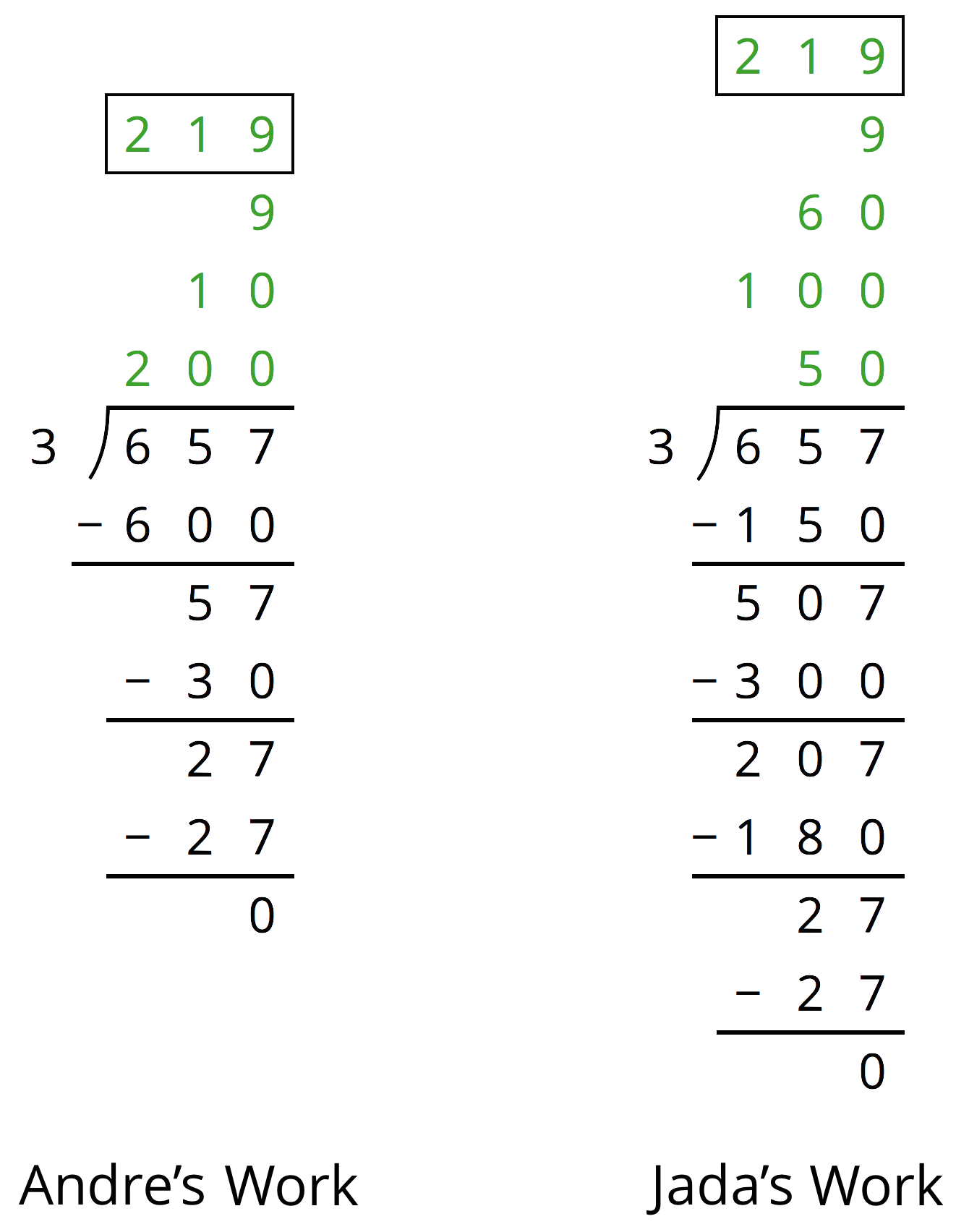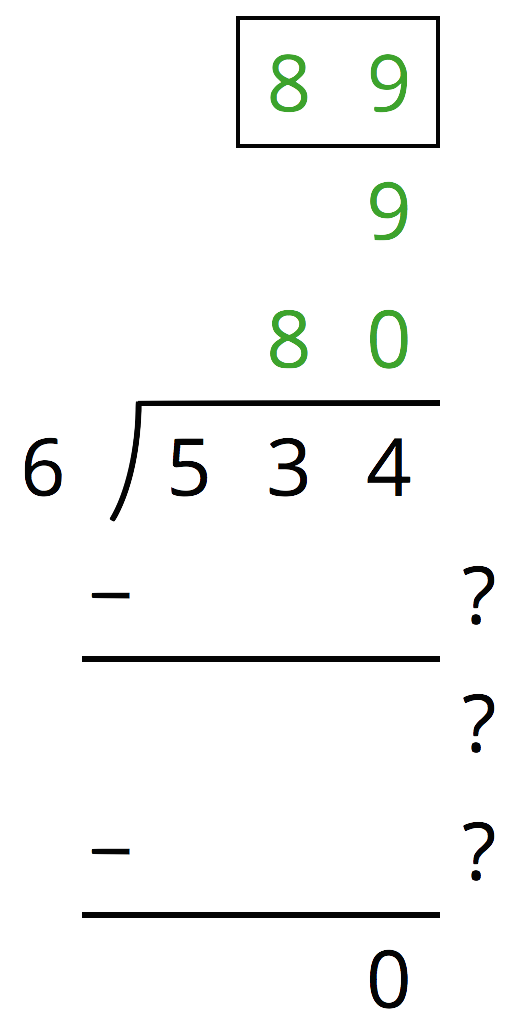Lesson 9
Using the Partial Quotients Method
Problem 1
Here is one way to find \(2,\!105 \div 5\) using partial quotients. Show a different way of using partial quotients to divide 2,105 by 5.

Solution
For access, consult one of our IM Certified Partners.
Problem 2

- How is Jada's work the same as Andre’s work? How is it different?
- Explain why they have the same answer.
Solution
For access, consult one of our IM Certified Partners.
Problem 3
Which might be a better way to evaluate \(1,\!150 \div 46\): drawing base-ten diagrams or using the partial quotients method? Explain your reasoning.
Solution
For access, consult one of our IM Certified Partners.
Problem 4
Here is an incomplete calculation of \(534\div 6\).
Write the missing numbers (marked with “?”) that would make the calculation complete.

Solution
For access, consult one of our IM Certified Partners.
Problem 5
Use the partial quotients method to find \(1,\!032 \div 43\).
Solution
For access, consult one of our IM Certified Partners.
Problem 6
Which of the polygons has the greatest area?
A rectangle that is 3.25 inches wide and 6.1 inches long.
A square with side length of 4.6 inches.
A parallelogram with a base of 5.875 inches and a height of 3.5 inches.
A triangle with a base of 7.18 inches and a height of 5.4 inches.
Solution
For access, consult one of our IM Certified Partners.
(From Unit 5, Lesson 8.)Problem 7
One micrometer is a millionth of a meter. A certain spider web is 4 micrometers thick. A fiber in a shirt is 1 hundred-thousandth of a meter thick.
-
Which is wider, the spider web or the fiber? Explain your reasoning.
- How many meters wider?
Solution
For access, consult one of our IM Certified Partners.
(From Unit 5, Lesson 4.)